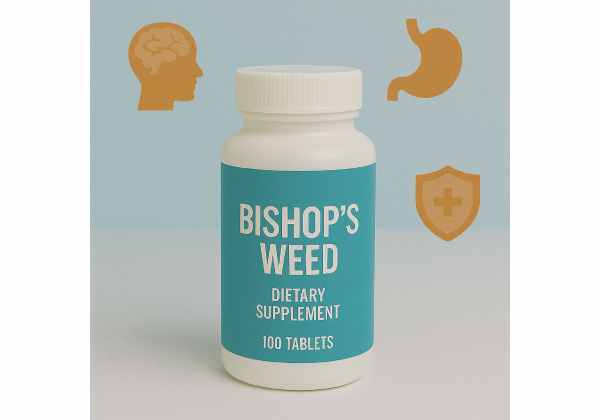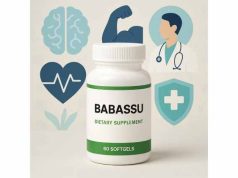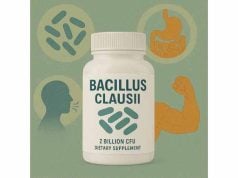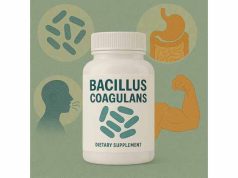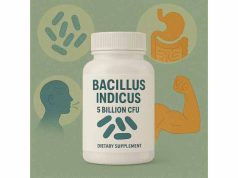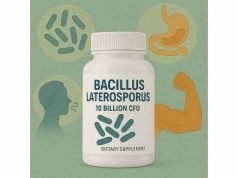Bishop’s Weed, also known as Ajwain or Trachyspermum ammi, is an aromatic spice and medicinal plant used for centuries in traditional wellness practices, especially in South Asia and the Middle East. Renowned for its sharp, thyme-like flavor, Bishop’s Weed seeds and extracts are prized for their digestive, respiratory, and anti-inflammatory effects. Many people turn to Bishop’s Weed to soothe stomach discomfort, combat indigestion, relieve cough and congestion, and support joint health. With growing global interest in herbal remedies, Bishop’s Weed supplements are now available in various forms—from oils and tinctures to capsules—offering natural relief and preventive health support. This comprehensive guide explores Bishop’s Weed’s benefits, uses, recommended dosages, and possible side effects.
Key Takeaways
- Bishop’s Weed (Ajwain) is a traditional herb valued for digestive health, respiratory relief, and anti-inflammatory properties.
- Its active compounds, such as thymol, help ease indigestion, gas, bloating, and coughs naturally.
- Commonly consumed as seeds, oil, or extracts, it’s used in both culinary and medicinal settings worldwide.
- Generally safe when used in moderation, but can cause side effects in high doses or sensitive individuals.
- Always consult a healthcare professional before starting Bishop’s Weed supplements, especially if pregnant, nursing, or on medication.
Table of Contents
- Bishop’s Weed Herb Overview: What It Is and How It Works
- Active Compounds and Biological Effects of Bishop’s Weed
- Evidence-Based Benefits and Traditional Uses of Bishop’s Weed
- Safety Considerations, Potential Side Effects, and Drug Interactions of Bishop’s Weed
- Proper Dosage, Forms, Usage Guidelines, and Best Practices for Bishop’s Weed
- Bishop’s Weed FAQ: Common Questions Answered
Bishop’s Weed Herb Overview: What It Is and How It Works
Bishop’s Weed, commonly known as Ajwain, is a small, annual herb that produces tiny, oval seeds with a strong, pungent aroma and taste reminiscent of thyme. Native to the eastern Mediterranean, North Africa, and parts of Asia, this herb has carved a unique place in traditional medicine and world cuisines.
Botanical and culinary identity:
- The scientific name is Trachyspermum ammi.
- Its seeds, often called “ajwain seeds,” are a staple in Indian, Middle Eastern, and North African kitchens, valued for both flavor and digestive aid.
How is Bishop’s Weed used?
- As a spice: Seeds are dry-roasted or fried in oil to enhance curries, breads, and snacks. Their flavor profile is sharp, slightly bitter, and peppery.
- In herbal medicine: Both seeds and essential oil are used therapeutically for digestive, respiratory, and joint support.
- As a supplement: Modern preparations include capsules, tinctures, and concentrated oils, often standardized for their active compounds.
Key components and their roles:
The seeds and oils are packed with essential oils, the most important of which is thymol. Thymol gives Bishop’s Weed its signature aroma and many of its therapeutic effects. Other notable components include carvacrol, terpenes, and flavonoids, all contributing to its health-supporting profile.
Traditional systems and uses:
- In Ayurveda (ancient Indian medicine), Bishop’s Weed is a premier remedy for digestive complaints, including indigestion, flatulence, and abdominal discomfort.
- Unani and Siddha medicine systems utilize Bishop’s Weed for asthma, cough, rheumatic pain, and urinary issues.
- In folk remedies, Bishop’s Weed is applied topically to ease muscle aches and promote wound healing.
How does it work?
- Digestive health: The seeds stimulate digestive enzymes, boost gastric secretions, and relax intestinal muscles, which helps relieve bloating, gas, and cramping.
- Respiratory support: The essential oil’s expectorant and antimicrobial actions help clear mucus and soothe coughs.
- Anti-inflammatory and pain relief: Bishop’s Weed’s compounds reduce inflammation markers, supporting joint comfort and easing minor aches.
- Antimicrobial properties: Thymol and related oils inhibit the growth of certain bacteria and fungi, helping protect against infections when used topically or as a gargle.
Modern research and ongoing interest:
Recent scientific studies are examining Bishop’s Weed’s ability to support metabolic health, manage blood sugar, and reduce cholesterol, although most evidence remains preliminary. Its popularity as a supplement has increased due to rising interest in natural solutions for common digestive and respiratory complaints.
Who uses Bishop’s Weed and why?
- People seeking natural digestive remedies
- Those looking to relieve coughs, colds, and mild asthma
- Individuals with joint discomfort or inflammatory conditions
- Cooks who appreciate bold, aromatic flavors in their dishes
- Anyone seeking plant-based alternatives to over-the-counter antacids or cough remedies
Summary: Bishop’s Weed is more than just a spice. Its blend of culinary, medicinal, and cultural significance makes it a powerful, multipurpose herb for health-conscious consumers.
Active Compounds and Biological Effects of Bishop’s Weed
Bishop’s Weed owes its broad range of health effects to a potent mix of essential oils, phytochemicals, and nutrients packed inside its tiny seeds. Understanding these active compounds—and how they interact with the human body—can help users appreciate the herb’s many therapeutic uses.
Primary active components:
- Thymol: The most significant component, thymol is a natural monoterpene phenol. It gives Bishop’s Weed its strong aroma and plays a central role in digestive, antimicrobial, and expectorant effects.
- Carvacrol: Closely related to thymol, carvacrol enhances the herb’s antibacterial and anti-inflammatory properties.
- Terpenes and flavonoids: These plant chemicals offer antioxidant protection, helping the body neutralize free radicals that can lead to inflammation and cellular damage.
- Fatty acids and protein: Although present in smaller amounts, these nutrients contribute to the seeds’ overall nutritional value.
How do these compounds work?
- Digestive stimulation: Thymol increases the activity of digestive enzymes and bile acids, promoting smoother digestion and reducing symptoms of indigestion, bloating, and abdominal discomfort.
- Antimicrobial action: Bishop’s Weed oils have shown inhibitory effects against a range of bacteria and fungi, supporting the body’s natural defenses and justifying its traditional use for respiratory and oral health.
- Anti-inflammatory effects: Both thymol and carvacrol act on pathways that reduce inflammatory markers. This helps relieve minor pain, swelling, and redness—whether from joint conditions or muscle aches.
- Expectorant and bronchodilator action: The essential oil in Bishop’s Weed can loosen mucus and open airways, making it valuable for cough, cold, and mild asthma support.
- Antioxidant activity: Terpenes and flavonoids help prevent oxidative damage to cells, contributing to overall health and wellness.
Biological effects in detail:
- Gut motility: Ajwain seeds gently stimulate the smooth muscles of the intestine, encouraging the passage of gas and relieving cramps.
- Respiratory tract support: The essential oils clear bronchial tubes, relieve congestion, and can help inhibit microbial growth in the throat and lungs.
- Potential metabolic benefits: Animal and test-tube studies suggest that Bishop’s Weed may help reduce cholesterol and support healthy blood sugar levels by influencing digestive enzymes and hormone activity.
- Topical and oral applications: Used externally, Bishop’s Weed oil can soothe minor skin infections, joint pains, and insect bites due to its antimicrobial and anti-inflammatory properties.
Traditional wisdom meets modern science:
While traditional healers have long praised Bishop’s Weed for digestive, respiratory, and pain-relieving effects, modern studies are beginning to validate many of these uses. Laboratory findings support its ability to calm stomach spasms, fight germs, and reduce inflammation, though more human studies are needed for definitive conclusions.
Quality and standardization:
Because Bishop’s Weed supplements vary widely in concentration and formulation, it’s essential to choose products that specify thymol content or provide standardized extracts for predictable results.
Summary: The dynamic synergy of Bishop’s Weed’s active compounds underpins its reputation as a powerful natural remedy for digestion, immunity, and inflammation.
Evidence-Based Benefits and Traditional Uses of Bishop’s Weed
The health benefits of Bishop’s Weed are a blend of well-documented traditional uses and a growing body of scientific evidence. Here’s a deep dive into how Bishop’s Weed supports wellness—and why it remains a popular herbal remedy around the globe.
1. Digestive support and indigestion relief
- Bishop’s Weed seeds have long been used to calm upset stomachs, alleviate bloating, and encourage healthy digestion. Chewing a pinch of seeds after meals or brewing them in tea is a common home remedy for gas and indigestion.
- Thymol’s ability to stimulate digestive juices and enzyme production helps break down food, speeding up digestion and reducing discomfort.
2. Respiratory relief: cough, cold, and congestion
- Bishop’s Weed is a classic ingredient in natural cough remedies and steam inhalations for its expectorant and bronchodilator effects.
- It helps clear mucus from the respiratory tract, making it easier to breathe during colds, asthma attacks, or seasonal allergies.
3. Joint and muscle comfort
- Used topically as an oil or poultice, Bishop’s Weed provides soothing relief for minor joint aches, swelling, and muscle pains.
- Its anti-inflammatory action may help with arthritis symptoms or exercise-related soreness.
4. Antimicrobial and oral health protection
- The thymol-rich oil in Bishop’s Weed has proven germ-fighting abilities. Traditionally, it’s used as a mouthwash or gargle to combat bad breath and oral infections.
- Its antibacterial properties also make it a natural preservative in some traditional foods.
5. Metabolic and cholesterol management (emerging evidence)
- Early research indicates Bishop’s Weed may help lower cholesterol and improve metabolic health by supporting liver function and reducing oxidative stress.
- Some practitioners use it as part of broader natural protocols for blood sugar balance, though more studies are needed to confirm these effects in humans.
6. Skin and wound care
- Bishop’s Weed oil is sometimes applied to minor cuts, bites, and infections to speed healing and prevent infection due to its antimicrobial effects.
7. Culinary uses and daily wellness
- Beyond medicine, Bishop’s Weed’s pungent seeds are an everyday spice in breads, curries, and vegetable dishes, imparting flavor and functional health benefits.
- Many people add a small pinch of seeds to warm water as a daily digestive tonic or as part of a healthy lifestyle.
Who benefits most from Bishop’s Weed?
- Individuals with recurring digestive troubles, such as indigestion, flatulence, or mild irritable bowel symptoms
- Those seeking natural remedies for coughs, congestion, or mild asthma
- People managing mild joint aches or inflammation without harsh pharmaceuticals
- Home cooks and wellness enthusiasts looking to boost daily vitality and resilience
Limitations and considerations:
- Bishop’s Weed is not a replacement for medical treatment of serious conditions.
- Large or concentrated doses can lead to side effects, especially in children or pregnant women.
- Supplements may interact with prescription medications—always consult a professional for guidance.
Summary:
Bishop’s Weed’s reputation as a multifaceted remedy rests on its broad range of effects—from stomach soother and cough reliever to culinary staple and emerging metabolic aid.
Safety Considerations, Potential Side Effects, and Drug Interactions of Bishop’s Weed
When it comes to natural remedies like Bishop’s Weed, safety is just as crucial as effectiveness. While Bishop’s Weed (Ajwain) is widely used and generally considered safe in culinary quantities, higher doses and supplemental forms demand more careful consideration. Here’s what you need to know about side effects, who should avoid Bishop’s Weed, and how it may interact with medications and other health conditions.
Potential Side Effects: What to Watch For
- Digestive discomfort: In large doses, Bishop’s Weed can cause heartburn, nausea, or mild abdominal pain. Ironically, while it’s used to soothe the gut, overconsumption may irritate the stomach lining or worsen reflux for sensitive individuals.
- Allergic reactions: Though rare, some people may experience skin rashes, itching, or even more severe allergic reactions. Those with known sensitivities to plants in the Apiaceae family (such as celery, parsley, or fennel) should exercise caution.
- Photosensitivity: Topical use of Bishop’s Weed oil, especially on fair skin, may increase sensitivity to sunlight, potentially causing rashes or sunburn. Always wash off thoroughly and use sun protection.
- Headaches or dizziness: Overuse of Bishop’s Weed oil (inhaled or ingested) has occasionally been linked to headaches, dizziness, or lightheadedness, likely due to its potent essential oils.
- Potential toxicity in excess: Extremely high doses—well above dietary or recommended supplemental intake—could be toxic, causing symptoms like vomiting, tremors, or rapid heartbeat.
Who Should Avoid or Use Caution with Bishop’s Weed?
- Pregnant or breastfeeding women: Bishop’s Weed has traditional uses to stimulate uterine contractions, so it should be avoided during pregnancy and only used under supervision while nursing.
- Children: Use in children is not well studied; culinary use is typically safe, but supplements or oils should be avoided without medical advice.
- People with liver or kidney disorders: Since Bishop’s Weed’s essential oils are metabolized in the liver, those with compromised organ function should avoid high or prolonged intake.
- Individuals taking certain medications: As Bishop’s Weed can affect digestion, blood pressure, and liver enzymes, interactions with various medications are possible.
Possible Drug Interactions
- Blood-thinning medications (anticoagulants): Bishop’s Weed may mildly influence blood clotting. While the risk is low at culinary doses, those on prescription anticoagulants should be cautious.
- Diabetes medications: There is some evidence Bishop’s Weed could lower blood sugar, so it may enhance the effects of diabetic drugs, risking hypoglycemia.
- Antihypertensive drugs: Because Bishop’s Weed may lower blood pressure slightly, combining it with these medications could cause blood pressure to drop too low.
- Antacids and proton pump inhibitors: Since Bishop’s Weed increases gastric secretions, it might reduce the effectiveness of antacids and similar medications.
General Safety Tips for Bishop’s Weed Use
- Start small: Introduce Bishop’s Weed into your diet or supplement routine gradually, especially if you’ve never used it before.
- Monitor for reactions: Watch for any unusual symptoms, especially skin changes, digestive upset, or headaches.
- Choose quality products: For supplements or oils, select reputable brands that clearly state ingredient concentrations and avoid unnecessary fillers.
- Don’t use essential oil undiluted: Bishop’s Weed oil should always be diluted with a carrier oil if applied to the skin.
- Consult your healthcare provider: Especially if you’re pregnant, breastfeeding, on medication, or have chronic health issues.
Summary:
Bishop’s Weed is generally safe for healthy adults when used in moderation, but it’s important to be mindful of side effects, especially at higher dosages or in sensitive populations. For best results and safety, always use under the guidance of a qualified health professional.
Proper Dosage, Forms, Usage Guidelines, and Best Practices for Bishop’s Weed
Optimal use of Bishop’s Weed depends on your purpose—culinary, traditional, or supplemental. While there is no single “universal dose,” traditional wisdom and emerging research provide guidance on safe and effective use.
Culinary Use:
- Seeds: Commonly, 1/4 to 1/2 teaspoon of ajwain seeds per meal is both flavorful and supportive of digestion. Toast or fry them to release oils before adding to food.
- Infusions/teas: Add 1/2 to 1 teaspoon of seeds to a cup of boiling water. Steep for 5–10 minutes, strain, and sip for digestive support.
Supplemental Forms:
- Capsules/tablets: Dosages range from 250 mg to 500 mg, 1–2 times daily. Start at the lower end and increase only as needed, and always follow manufacturer instructions.
- Essential oil: Never ingest undiluted oil. For oral use (rare), 1–2 drops diluted in a full glass of water or as directed by an experienced practitioner. For topical use, dilute with carrier oil (e.g., coconut or olive oil) in a 1:10 ratio.
- Tinctures/extracts: Use as directed; typical amounts are 10–30 drops, 2–3 times daily, mixed in water or juice.
Best Times to Use Bishop’s Weed:
- After meals: To promote digestion and reduce gas or bloating.
- At first signs of cough or congestion: As tea, tincture, or steam inhalation for respiratory relief.
- With food: To enhance absorption and reduce the risk of stomach irritation from concentrated supplements or oils.
Tips for Safe and Effective Use:
- Hydrate well: Especially if using Bishop’s Weed for digestion or as a diuretic, drink plenty of water.
- Cycle your usage: If using for more than 2–3 weeks, take breaks to avoid tolerance or side effects.
- Store properly: Keep seeds, oils, and supplements in a cool, dry place away from sunlight to preserve potency.
- Do not exceed recommended doses: More is not always better, and high doses increase risk without additional benefit.
Who Should Consider Lower Dosages or Avoid Use:
- Children under 12, unless under medical advice
- Pregnant or breastfeeding women (except in very small culinary amounts)
- Individuals with chronic health conditions or on multiple medications
Combining Bishop’s Weed with Other Supplements:
- It pairs well with other carminative herbs (like fennel, cumin, or ginger) for digestive blends.
- Be mindful when mixing with other blood sugar- or blood pressure-lowering supplements, as effects may be additive.
Recognizing Overuse:
- Signs of overuse include persistent heartburn, increased sensitivity to sunlight, skin rashes, or worsening headaches.
- Discontinue use and consult a healthcare provider if these occur.
Summary:
Start low, go slow, and use Bishop’s Weed as part of a balanced approach to health. When in doubt, consult a qualified herbalist or physician for personalized advice.
Bishop’s Weed FAQ: Common Questions Answered
What is Bishop’s Weed most commonly used for?
Bishop’s Weed (Ajwain) is most often used to relieve indigestion, gas, bloating, and mild respiratory complaints. It’s a popular spice for digestive wellness and natural cough remedies.
Is Bishop’s Weed safe for daily use?
Bishop’s Weed is generally safe for daily use in small, culinary amounts. Supplements and oils should be used cautiously and not long-term without professional guidance, especially for children or during pregnancy.
Can Bishop’s Weed help with weight loss?
While Bishop’s Weed may aid digestion and reduce water retention, it is not a proven or primary weight loss solution. Its main benefit is improved gut comfort, which may support overall wellness.
Are there any serious side effects of Bishop’s Weed?
Serious side effects are rare when used as a spice. Large or concentrated doses can cause stomach upset, allergic reactions, or increased sun sensitivity. Always use as directed and consult a healthcare professional if concerned.
How should Bishop’s Weed oil be used safely?
Always dilute Bishop’s Weed oil with a carrier oil before applying to the skin, and avoid direct sun exposure on treated areas. Do not ingest undiluted oil; internal use should be supervised by a qualified expert.
Does Bishop’s Weed interact with medications?
Bishop’s Weed may affect the action of blood thinners, diabetes drugs, and blood pressure medications. If you take any prescriptions, discuss Bishop’s Weed use with your doctor before starting.
Can pregnant or breastfeeding women use Bishop’s Weed?
It is best to avoid supplemental or medicinal amounts of Bishop’s Weed during pregnancy and breastfeeding due to possible uterine effects and lack of safety data.
Disclaimer:
The information provided in this article is for educational purposes only and should not be considered as a substitute for professional medical advice, diagnosis, or treatment. Always consult a qualified healthcare provider before starting any new supplement, especially if you have existing health conditions or take prescription medications.
If you found this guide on Bishop’s Weed helpful, please share it with friends, family, or anyone interested in natural health on Facebook, X (formerly Twitter), or your favorite social network. Your support helps us keep producing accurate, trustworthy wellness content. Follow us for more herbal wisdom and science-based tips!


